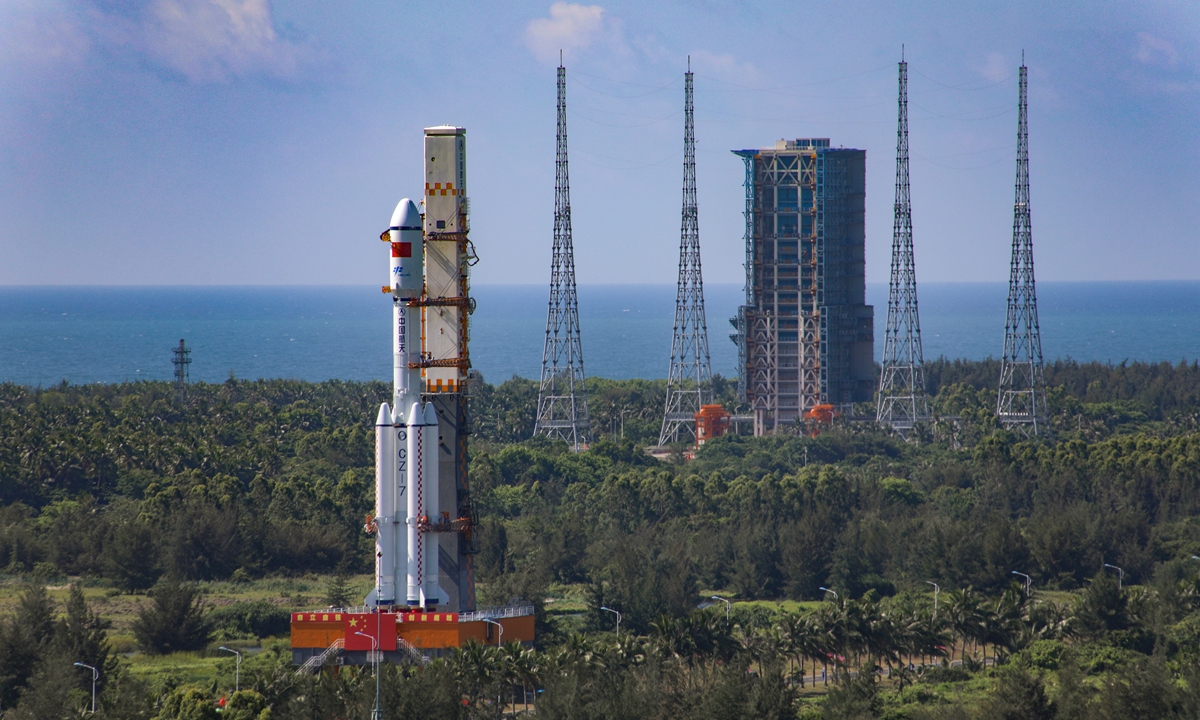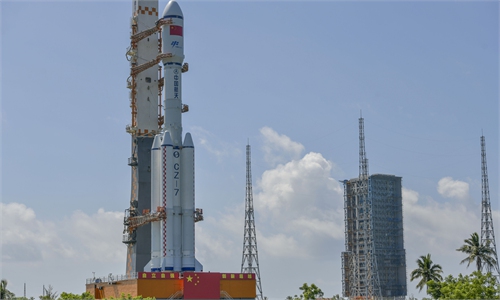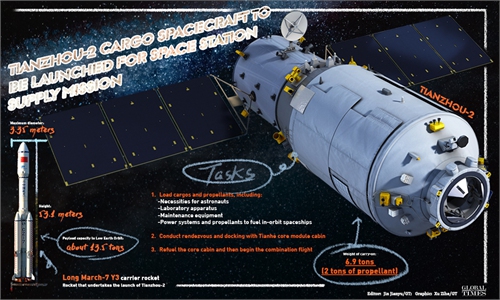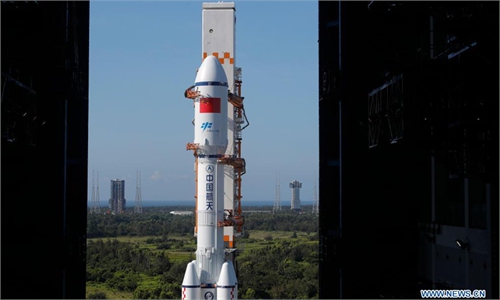Delay of Tianzhou-2 launch to China’s space station ‘a common, cautious move,’ shows nation’s zero tolerance for error in space missions: observers

Photo: Courtesy of CALT
The postponement of the launch of the Tianzhou-2 cargo spacecraft, which was announced by China Manned Space Agency (CMSA) on Thursday early morning due to “technical reasons” at a post-fuel stage of the mission, was seen by many space observers as a normal practice in the aerospace industry worldwide made out of safety considerations.
Mounted on a Long March-7 Y3 carrier rocket, the Tianzhou-2 cargo spacecraft was originally slated to be launched at around 1 am on Thursday and to head to China’s Tianhe space station core cabin, which was launched into orbit on April 29, for a supply run. However, the launch was scrubbed per a CMSA announcement released by around 1:15 Thursday, with the new time for launch “yet to be determined.”
Such post-fuel postponements are considered by observers as a “cautious safety move” by Chinese space authorities that allows no room for error and indicate their scientific spirit and confidence with composure, which should not be overlooked.
The technical issues mentioned in the CMSA notice that led to the delay decision could include situations such as the technical status of various systems onboard the spacecraft not being consistent with the predicted, ideal status, which requires some adjustments or maintenance to ensure the safety of the launch, Wang Ya'nan, chief editor of Aerospace Knowledge magazine, told the Global Times on Thursday.
Such a delay is very common in aerospace mission practices, Wang noted. “Unless it’s an emergency launch, scientists from all over the world will repeatedly examine the status prior to launch so that every detail is in line with the ideal setting.”
It also showed that China is not rushing into anything but keeping a steady pace, and is calm and confident in preventing any potential risks from going to space, observers said.
Chinese space analysts noted that since Tianzhou-2 will conduct autonomous rendezvous and docking with the Tianhe core cabin, it would be more important to guarantee a relatively accurate launch that sends the spacecraft to a position near the core module, a key move that both ensures the safety and smoothness of the docking, and that will also save a considerable amount of fuel.
The Tianzhou-2 cargo spaceship was tasked with delivering living necessities for future crewed missions and propellants to refuel the space station core cabin, as well as verification of the task status of docking interfaces.
After docking the Tianhe core module cabin in the back and completing its space delivery missions, the cargo spacecraft will then move to the front of the core cabin and dock with the front interface, before proceeding to the side interface.
“The success of each docking is crucial to the following missions to send astronauts to the space station and the two laboratory cabin modules, Wentian and Mengtian,” Wang explained.
In a similar previous case on June 16, 2020, China delayed the launch of the final satellite of the BeiDou-3 satellite navigation system after a technical problem was found during a test ahead of launch. In less than two days, the problem was properly solved with all systems verified as normal.
The final satellite of the BeiDou-3 satellite navigation system was successfully sent into space and entered its planned orbit on June 23, 2020.
The postponement of the final BeiDou launch and resumption after resolving the problems once again showed that Chinese space scientists uphold the scientific spirit, allowing zero errors at any stage of the mission, insiders said.



